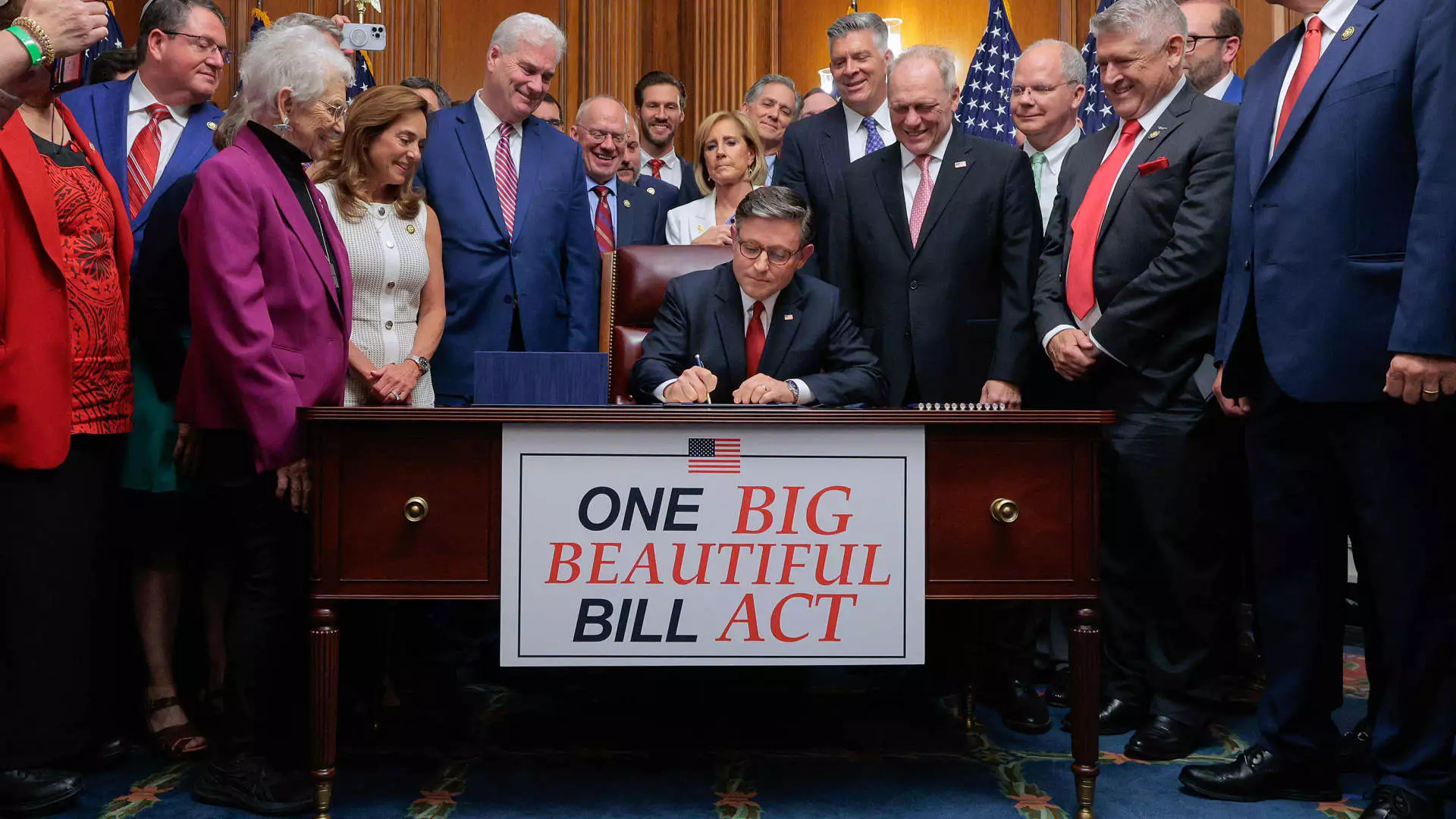In a sweeping move that appears to bring relief to some, President Trump’s recently enacted “big beautiful bill” promises a resurgence of benefits for American taxpayers. However, beneath the veneer of tax cuts and generous deductions lies a complex minefield that could just as easily harm the very people it claims to help. While the administration touts it as a triumph for working families, a critical eye reveals that many benefit calculations are riddled with ambiguities and potential pitfalls, especially if taxpayers fail to carefully strategize.
The legislation introduces a series of changes that seem straightforward on paper: larger standard deductions, temporary enhancements to tax benefits, and some notable provisions for specific groups like seniors or high earners. But the devil is in the details. For all its rhetoric about boosting family finances, the bill’s nuanced adjustments could inadvertently lead to higher taxes or missed opportunities if individuals or advisors don’t navigate the shifting landscape with meticulous precision. It’s a clear case of good intentions meeting a labyrinth of rules that threaten to trap the unwary.
Layered Benefits and Their Fragile Foundations
While the bill extends and solidifies a few of Trump’s previous tax cuts—like increased standard deductions and expanded child benefits—the true danger lies in how these benefits interact with other provisions, especially for high-income taxpayers. The notable uptick in the SALT deduction cap from $10,000 to $40,000 appears generous on the surface but is laced with a severe, often-overlooked tax spike—the so-called “SALT torpedo.” For those earning between $500,000 and $600,000, this phase-out can push effective tax rates sky-high, turning what might seem like an advantage into a hidden trap that could inflate tax liabilities to extreme levels.
The problem isn’t merely in the numbers but in the psychological illusion of gains. Taxpayers who assume that higher deduction caps automatically translate into lower taxes may be blindsided by the progressive phase-outs and the artificially high marginal rates. This becomes particularly relevant for high-net-worth individuals who attempt to maximize deductions without understanding the full ramifications—an error that can backfire and erode financial stability instead of enhancing it.
Temporary Relief or Long-Term Risk?
Another troubling aspect involves temporary enhancements that are set to expire or change after 2025. For example, the bill introduces a $6,000 “bonus” deduction for seniors, but this benefit phases out at higher income brackets. Such provisions, while seemingly beneficial, are perilous for those hovering around phase-out thresholds; minor income increases could mean losing substantial benefits. Yet, many taxpayers or advisors may overlook these sunset provisions, leaving them exposed when the sunset occurs or if income unexpectedly rises.
Equally concerning is the non-extension of enhanced Affordable Care Act subsidies. The pandemic-era boost made health coverage more affordable for millions. Now, with the potential loss of those subsidies, many families will face sticker shock when premium tax credits are reduced or entirely eliminated for incomes just slightly above the threshold. It’s a ticking time bomb that could make health coverage substantially more expensive—a hidden tax hike that no one seems ready to confront.
This scenario underscores a broader risk: neglecting long-term planning amidst short-term gains. Without proactive income and tax planning, many Americans might find themselves blindsided by rising costs, higher effective tax rates, and diminished benefits just as they thought they were gaining ground.
Why Vigilance and Strategy Are More Crucial Than Ever
Given this intricate web of rules and phase-outs, it’s evident that the legislation demands a high level of sophistication in tax planning. Rushing into filing without understanding these nuances could cause taxpayers to leave money on the table or, worse, fall into unintended tax traps. Experts warn that advising in silos—focusing only on one year or one aspect—could be disastrous.
Instead, taxpayers and advisors need to think multi-dimensionally. Projecting various scenarios for the upcoming years, understanding how each provision interacts with others, and re-evaluating income and deductions regularly become not merely recommendations but necessities. The new law’s complexity challenges the naive notion that simply claiming the higher deduction or the bigger benefit will suffice.
In a broader sense, this legislation exemplifies how tax policy, often shrouded in political rhetoric, can obscure the reality faced by actual Americans. For some, it presents opportunities; for others, it’s a potent trap that could squander hard-earned savings. The key lies in deliberate, informed decision-making—eschewing superficial benefits in favor of a comprehensive strategy aimed at safeguarding long-term financial health.
In conclusion, Trump’s recent tax law might seem like a gift on the surface—yet beneath that surface lies a treacherous terrain of phase-outs, caps, and sunset provisions. For individuals who fail to recognize these nuances, the law promises a false sense of security that could ultimately undermine their financial well-being. It’s a stark reminder that in the realm of taxes, assumptions and shortcuts are often the precursors to costly mistakes. Vigilance, critical thinking, and strategic planning are imperative if Americans are to truly benefit from this legislation rather than fall victim to its hidden pitfalls.

